The Megaton Mice appeared as a throwaway gag in Megaton Man #2 (Kitchen Sink Press, February 1985) only to disappear without a trace. That is, until the twenty-first century, when I wondered what had ever become of them in the Megaton Man universe.
The result appears as a minor subplot in Megaton Man: Return to Megatropolis, a still unpublished 160-page graphic novel begun in 2002 and completed in 2016 (at least the lettering and linework; it is still being colored and in the queue for 2026). More on this lost work on another occasion.
For the present purposes, suffice it to say that I brought back the little buggers and put them to use in the most obvious, no-brainer way imaginable—to spoof the Teenage Mutant Ninja Turtles. The mice continue to play an ongoing role in current Megaton Man continuity (by which I mean in comics and stories I am writing that are on the drawing board but not yet published in print comics).
The question for this post is: Why did it take me nearly forty years to realize the obvious—and exploit them in this crassly commercial and shallow way?
In Megaton Man #2, the Megatropolis Quartet headquarters is plagued by rodents who become irradiated and gain megapowers—as well as miniature Megaton Man costumes—to bedevil the team. They prank Yarn Man by tossing him onto the Time Turntable, sending him into the Forbidden Future. In response, Rex Rigid, mad-scientist leader of the group, irradiates a stray cat—thus, Kozmik Kat is born.
Koz chomps one of the five mice, presumably killing him, while the others hop onto the Time Turntable, also presumably to get lost in the Forbidden Future. Then, we never see them again.
Why it never occurred to me to use them more extensively to spoof Kevin Eastman and Peter Laird’s self-publishing phenomenon seems utterly inexplicable to me now. Clearly, from a mercenary point of view, this could have been a fun subplot fans would have eaten up, possibly enlarging the Megaton Man fan base and enhancing the publisher’s coffers.
Perhaps—and I’m grasping at straws trying to reconstruct plausible explanations—I simply had too many ideas and wanted to write the Megaton Man out of the strip to focus on other subplots. Perhaps because they were tiny I didn’t see the parallel with human-sized teenage turtles. Perhaps I wasn’t sure if TMNT was here to stay—this was before they even appeared in color First Comics reprints and long before the animated cartoon.
I really don’t know what I was thinking. But I clearly didn’t have my thinking cap on! At least a few more sly TMNT jokes would have be easy, low-hanging fruit to pick.
As I’ve expressed elsewhere, the parodies in Megaton Man—aside from very brief, hit-and-run digs at current fads and trends in comics—tended to be of comics I had read as a kid and internalized. Things that were unfolding in the 1980s, such as the Turtles, did not have as much emotional or sentimental weight to me, simply because I was then the wrong age for them to have an impact on me. My sensibilities had been formed by circa-1972 comics, newspaper strips, and Mad magazine, among other influences. Few things then current in the 1980s resonated with me as deeply. I was a grown-up pro, not so much a fan, I wanted to think.
Whatever the reason, the Megaton Mice disappeared and never resurfaced—even when Adolescent Radioactive Blackbelt Hamsters and other carbon copies populated the black-and-white book of the later eighties (by then, I had moved on to my “serious” science fiction epic, Border Worlds). The mice could have easily cashed in on this craze blindfolded!
Flash forward to the 2014, when I was putting the finishing touches on Return to Megatropolis. With a reconstituted Quartet Headquarters (now retconned as the Quantum Tower) came a lone Megaton Mouse, returned from the Forbidden Future to pester the Extended Nuclear Family.
Soon, the other three surviving mice show up, and the reunited foursome are enlarged to human size—instant Teenage Mutant Ninja Turtles spoof! Why didn’t I think of this about a million years ago? The youthful permutaions, now bigger and somewhat wiser, even forgive Kozmik Kat’s youthful indiscretion (he only had his megapowers a few minutes when he chomped their brother), and Koz becomes the unlikely mentor to the mice.
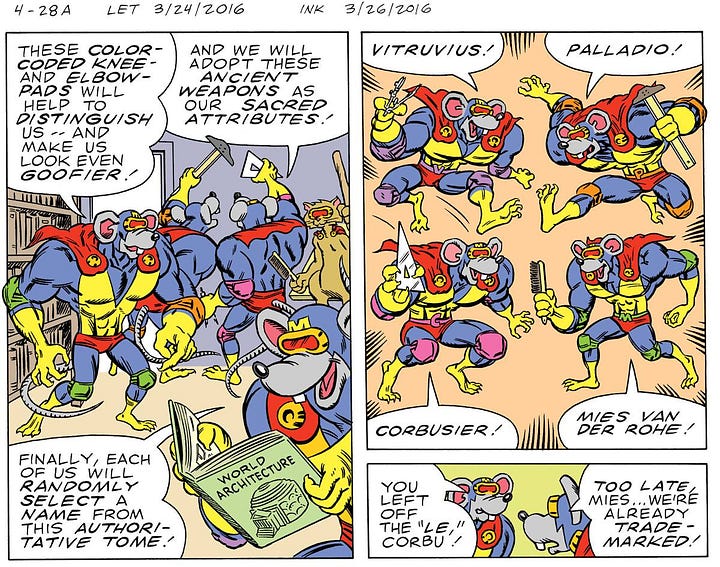
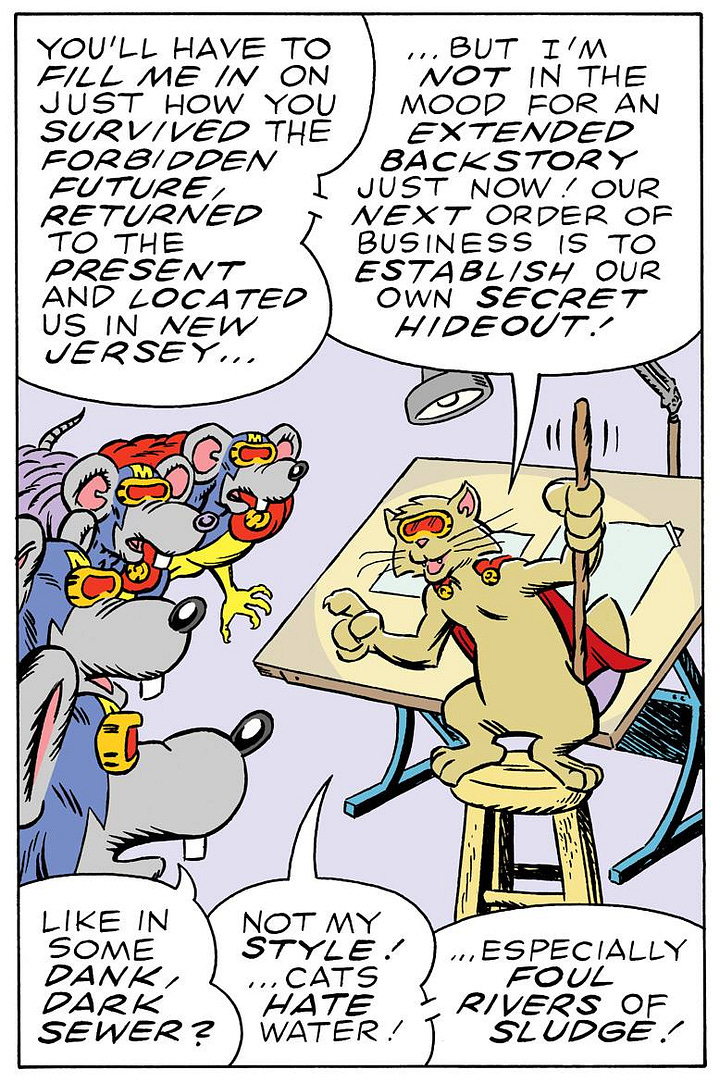
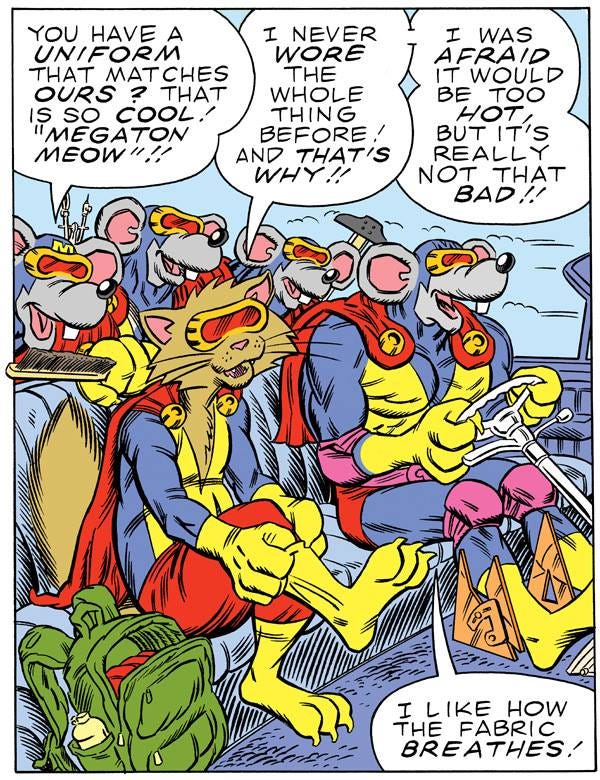
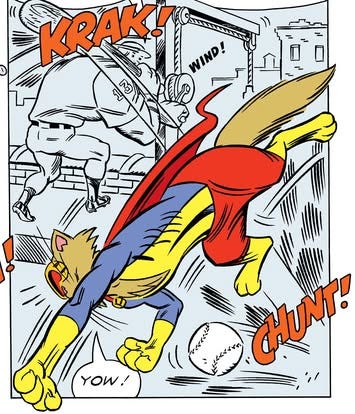
The Megaton Mice next appear in X-Amount of Comics: 1963 (WhenElse?!) Annual (Fantagraphics Underground, 2023)—effectively their first appearance, without origin—and then in Megaton Man and the Doom Defiers (the current work-in-progress still on the drawing board. In the latter, our the rambunctious teens hole up in a beach house near the Doom Defiers headquarters, and hilarity ensues.
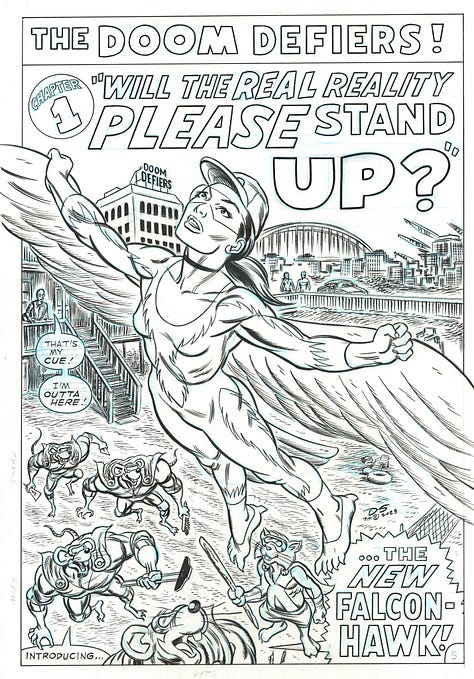
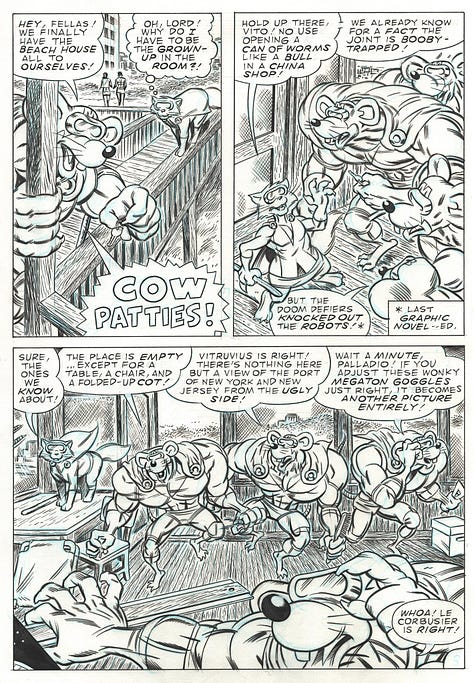
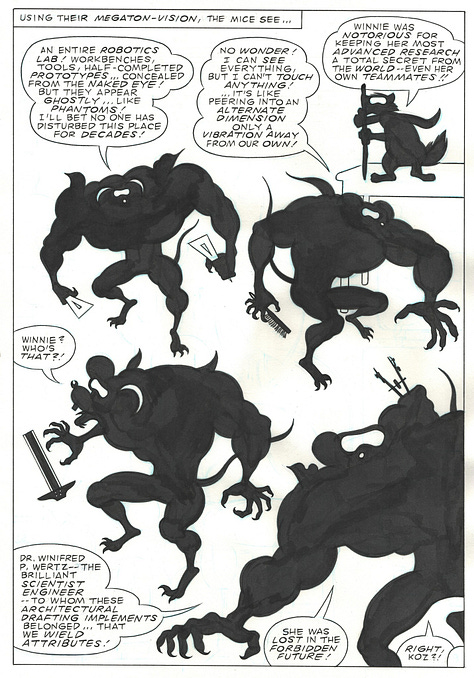
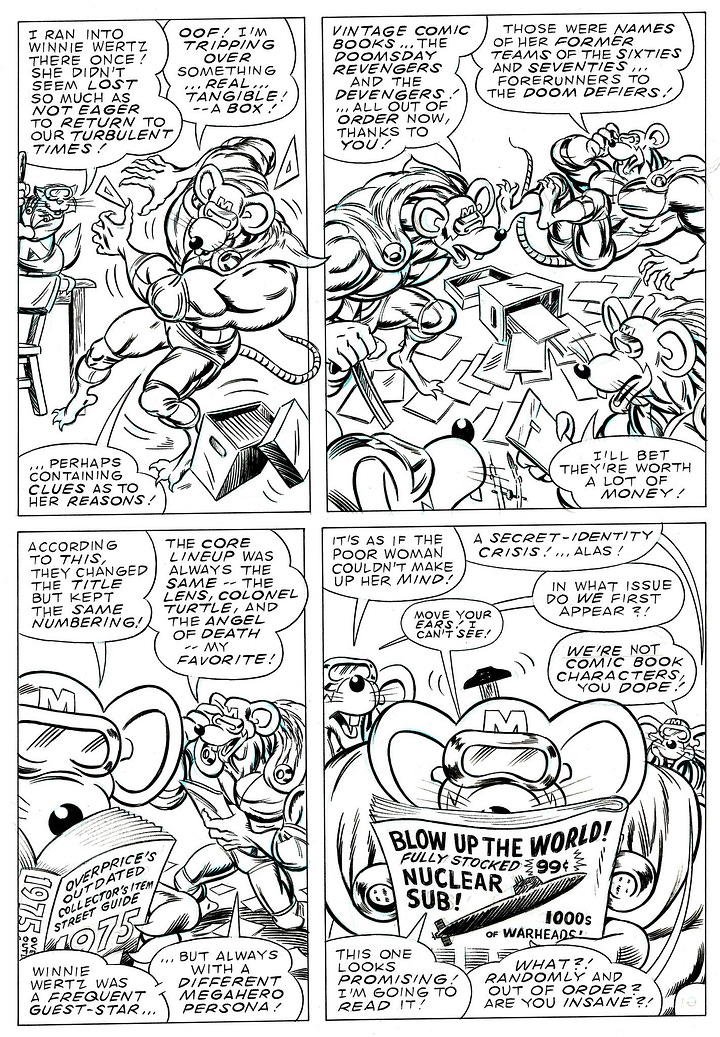
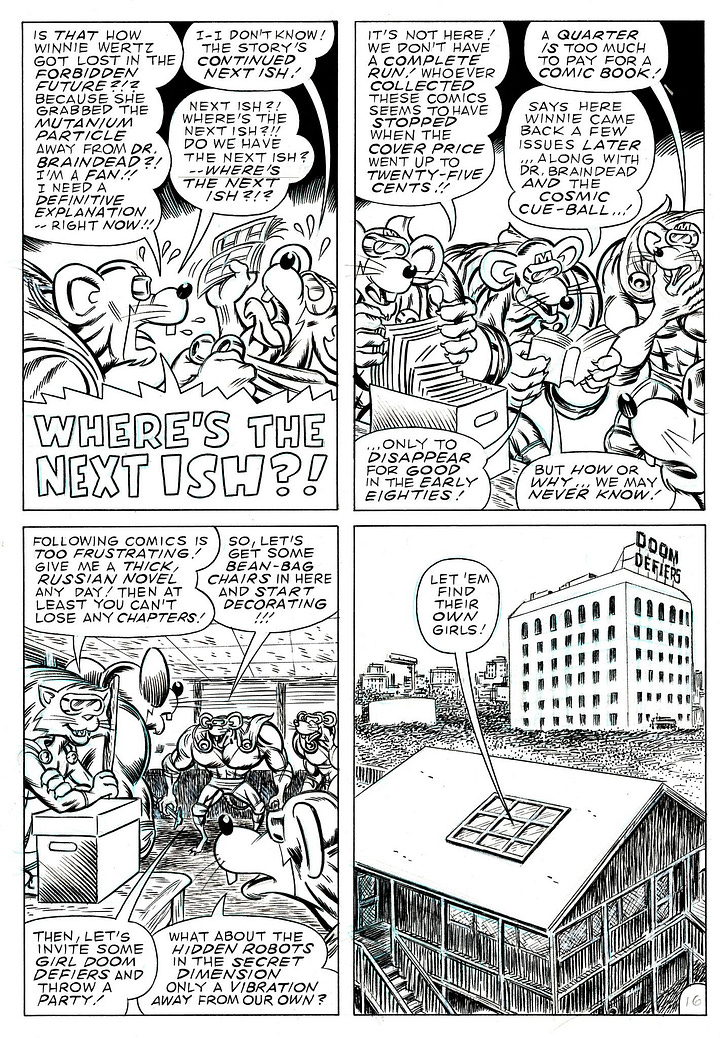
The next piece of the puzzle for me was the question: What ever happened to the fifth mouse—the one that got chomped? Spoiler alert: there is always life after death in comics, and zombies are popular, and—you can do the math. Suffice it to say, I know exactly what happens, and have already scripted a scene for the forthcoming Doom Defiers, yet to be drawn.
In the past week or so, I’ve leapt further ahead in terms of continuity to pencil a seven-page story that explains the predicament of the fifth mouse, now that he’s back. This may be the first time I’ve ever jumped the gun like this, but I just followed the inspiration. I have to take it where I can find it these days. Let’s face it—I haven’t had a new idea since about 1989!
Below are the pencils with most of the lettering.
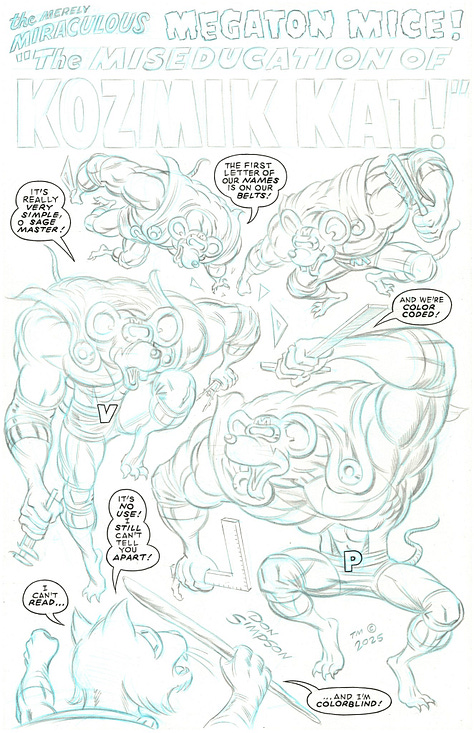
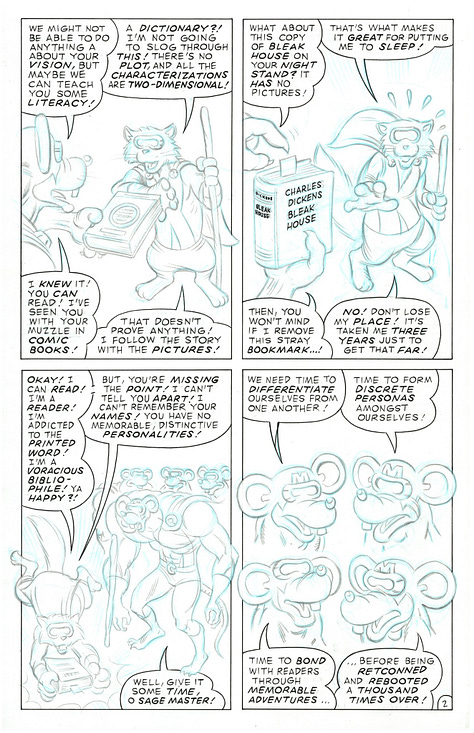
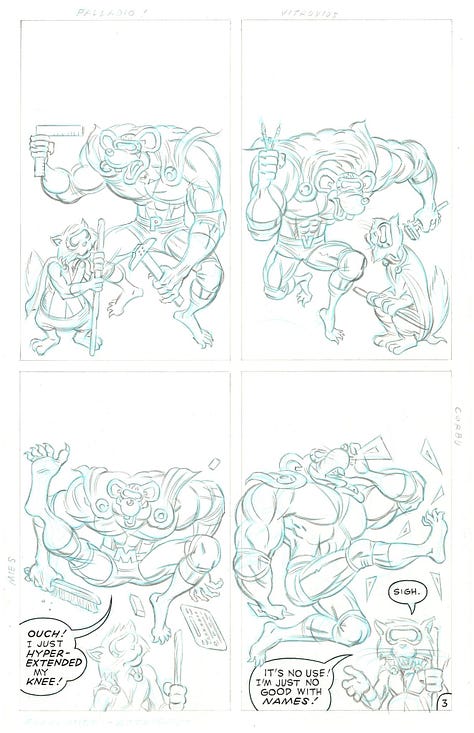
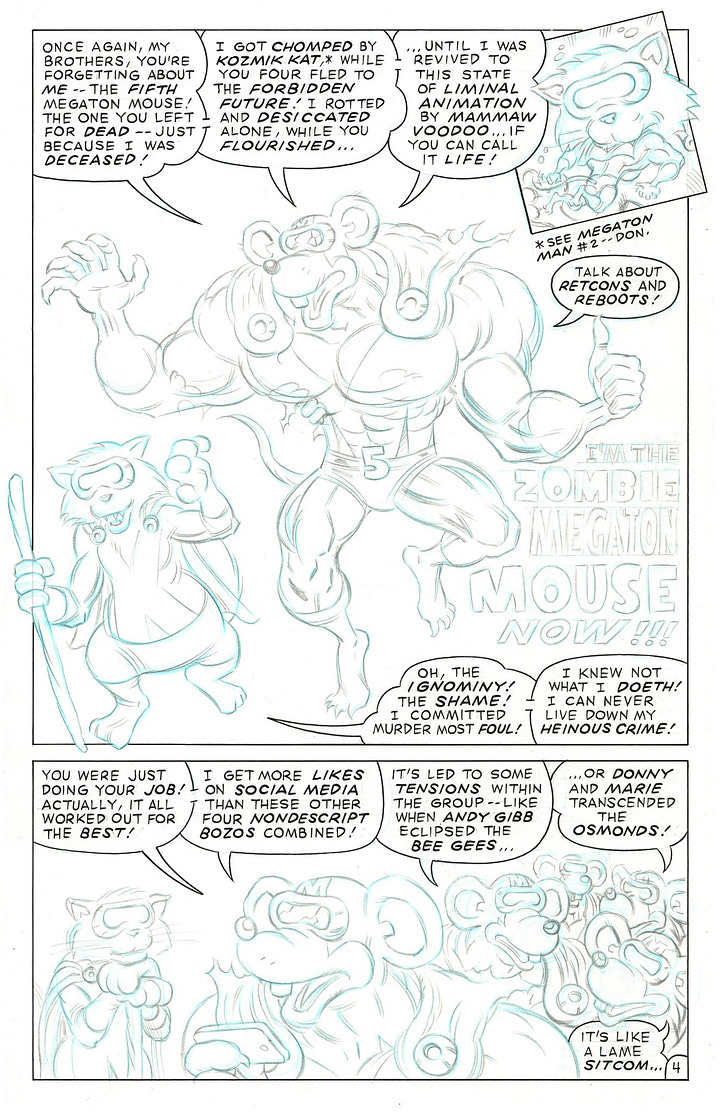
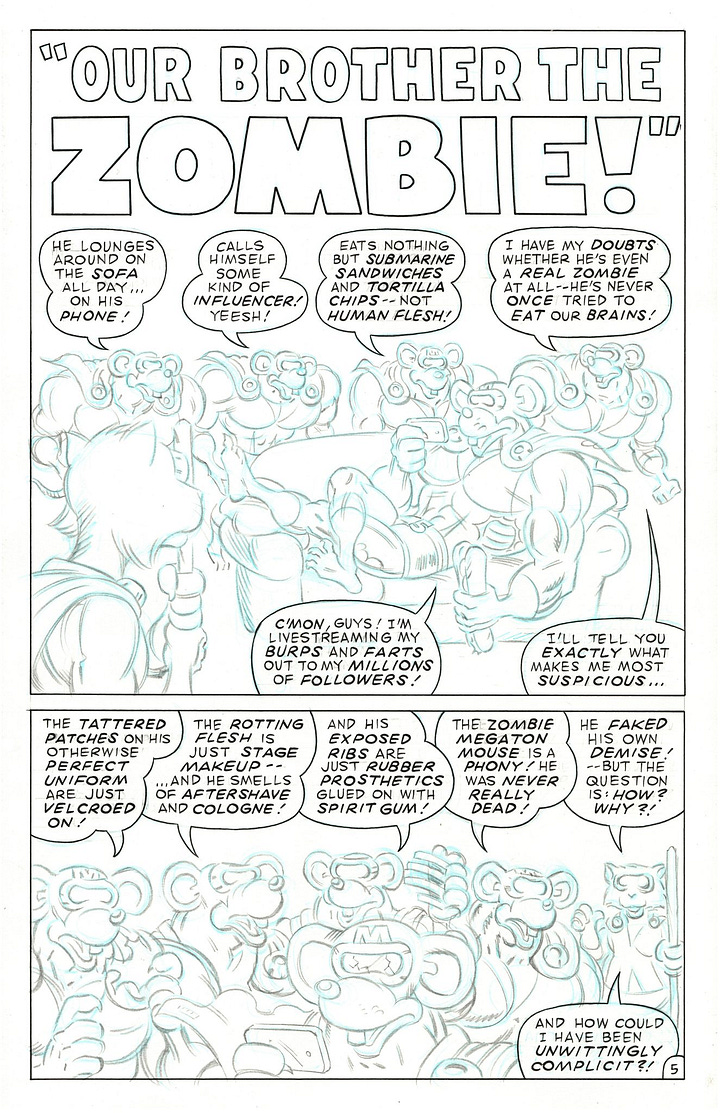
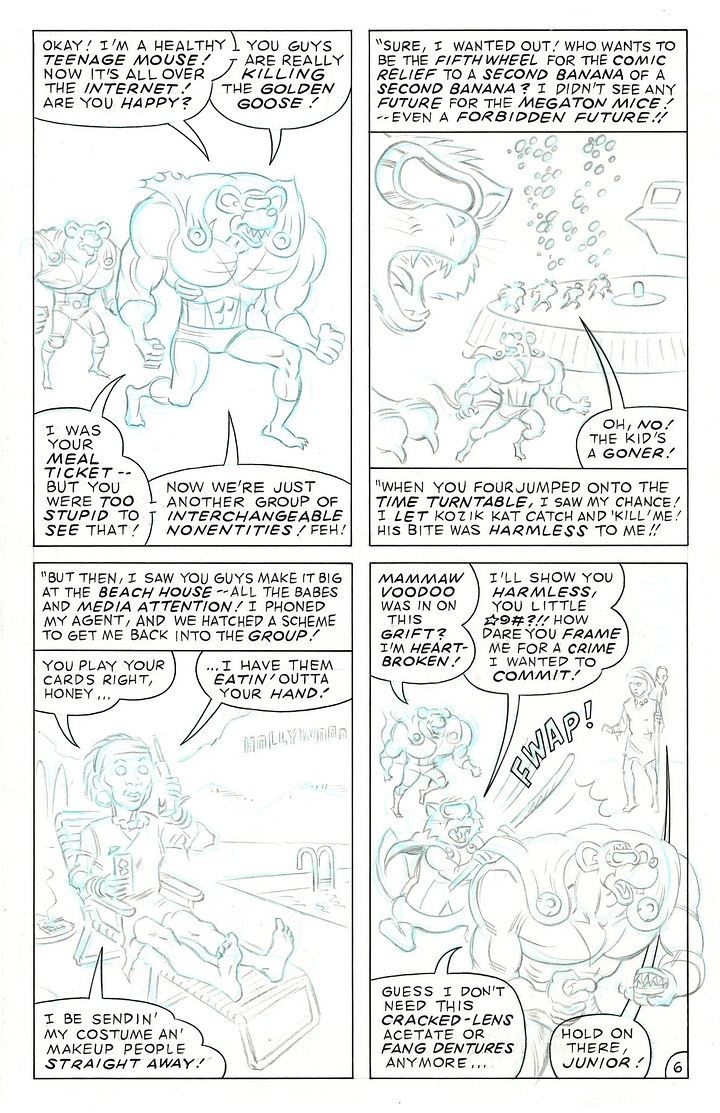
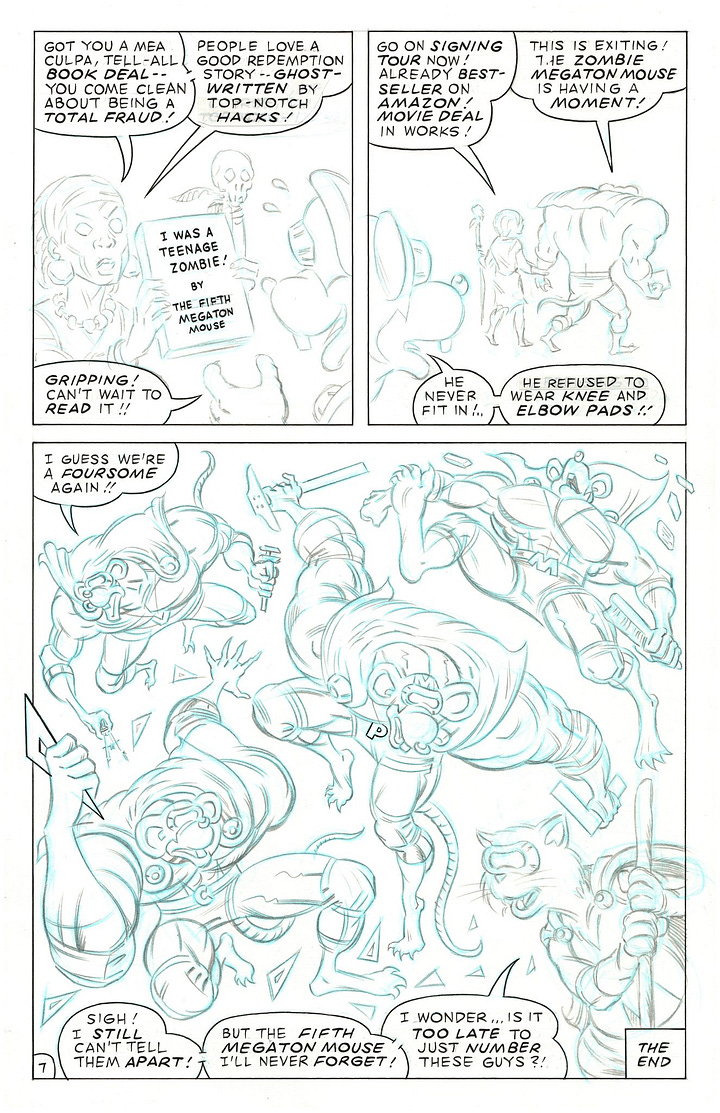
A rather serendipitous moment occurred this past week. Kevin Eastman, who was literally wearing a Megaton Man “I eat X-Men for breakfast!” pin when I met him in 1985, and who overpaid outrageous prices for convention sketches from me back in the day, emailed me a few snaps of some of the artwork he’s had hanging on his studio walls all these years. The Dr. Martin’s dyes are faded quite a bit, so it’s obvious he’s gotten some use from them—he is now rehanging them in a new house.
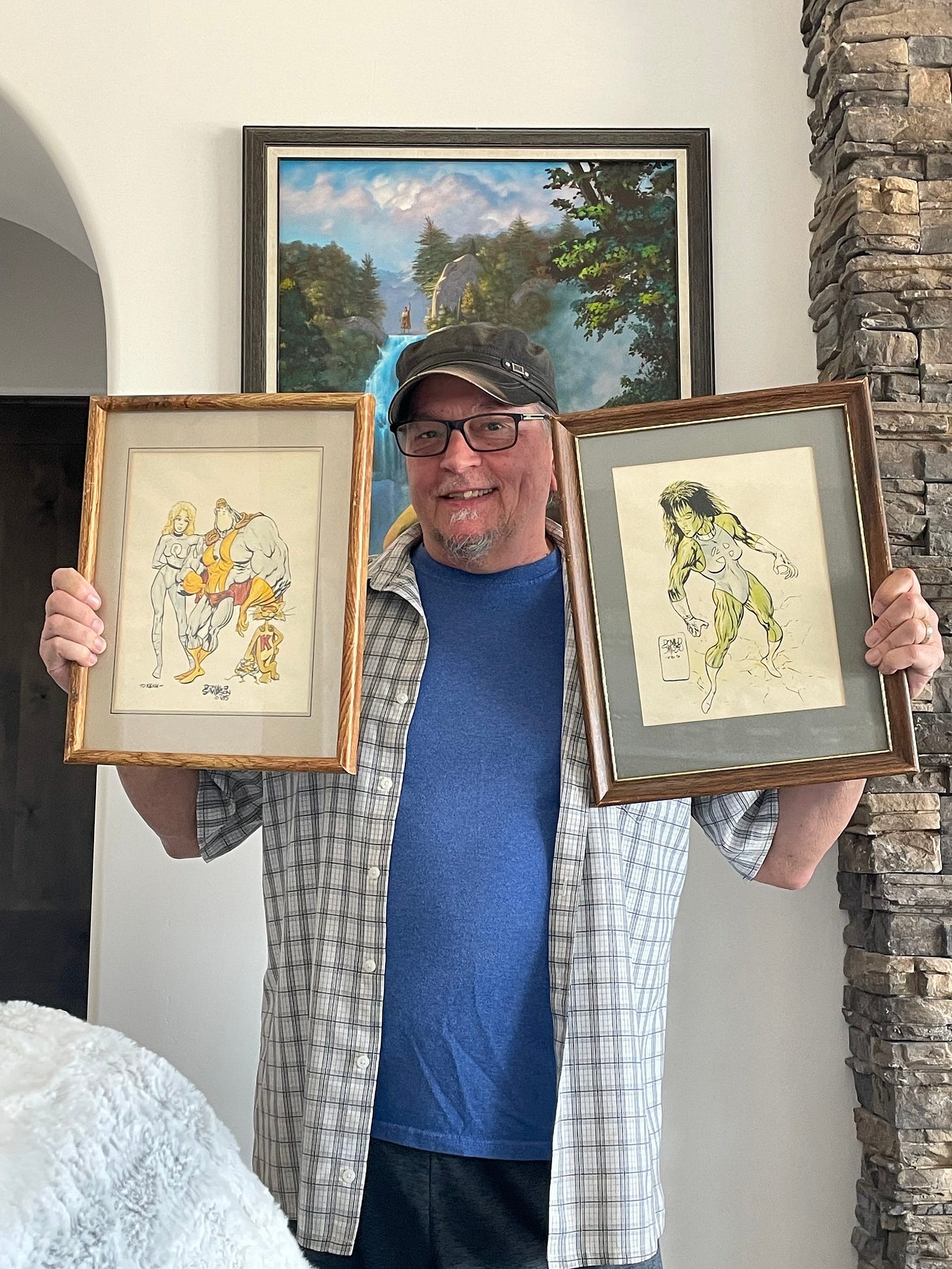
What is remarkable is that one of them clearly shows one of the Megaton Mice and Kozmik Kat (the only time Koz ever had a “K” on his torso that I can recall).

It’s only taken forty years for things to come full circle!
Please support Megaton Man: Multimensions—crowdfunding campaign ends May 21, 2025!





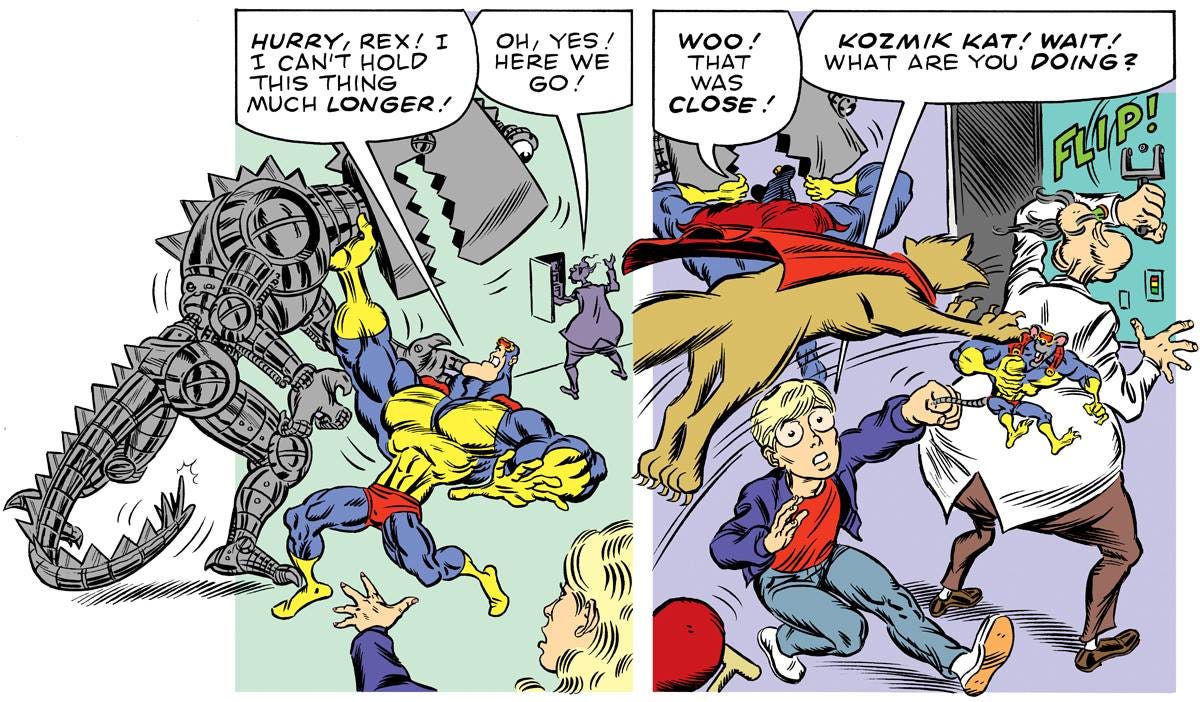
One should note that over the intervening decades, certain properties like TMNT became so pervasive that one could absorb them almost by osmosis, even if one were a hermit trying to avoid pop culture altogether. Not to mention the fact that I actually drew a couple of TMNT stories for Archie and Mirage Studios as a freelancer in the late eighties and early nineties, so I got something of an on-the-job education first hand!
Don, did you ever do weekly strips? I don't remember.